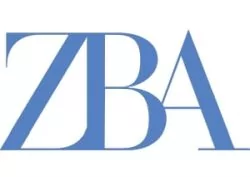Introduction
Reserve Bank of India ("RBI') announced a slew of measures aimed at pro-actively moderating the impact of stressed financial conditions resulting from COVID-19 pandemic ("COVID-19"), by injecting liquidity and reducing volatility in financial markets.
Liquidity Management Life Support
The RBI has taken the following, timely, relevant and unprecedented measures to increase liquidity in the Indian financial system:
- Targeted long term repos operations ("TLTRO"): TLTRO is aimed at providing stability to debt capital markets and reduce pressures on cash flows for corporates. Under this mechanism, RBI conducts auctions of targeted term repos up to 3 years tenor of appropriate sizes for a total amount of up to Rs. 1 lakh crore at a floating rate linked to the policy repo rate. The liquidity availed under TLTRO must be used by banks in investment grade corporate bonds, commercial paper and non-convertible debentures, with 50% invested in primary market issuance and 50% invested in the secondary markets (such purchases from mutual funds and non-banking finance companies). The aim is to ensure the inter-bank market does not freeze. This is consistent with the IMF release in March 2020 on "Policy Steps to address the Corona Crisis", which proposed central banks must provide liquidity to ensure continued market functioning in stressed times. TLTRO has given banks liquidity to on-lend to corporates in debt capital markets products so whilst there may be a cost of borrowing, the fact is that there money available to be borrowed by companies. The usefulness of all the RBI measures will be seen over time. It would be useful for RBI to require banks to report how the proceeds of TLTRO have been used so that at a macro level, the effect can be seen.
- Reduce Repo and Reverse Repo: The RBI has reduced the repo rate by 75 basis points from 5.15% to 4.4%, which reduces cost of borrowings for banks, and reverse repo rate from 4.9% to 4%. Since there is a greater reduction in the reverse repo rate than the repo rate, RBI has incentivized banks to lend funds rather than enter into reverse repo transactions.
- Reduction in cash reserve ratio ("CRR"): The percentage of cash deposits banks are required to maintain with RBI as CRR has been reduced by 100 basis points to 3% of net demand and time liabilities up to 26 March 2021. This releases approximately primary liquidity of about Rs. 1,37,000 crore uniformly across the banking system in proportion to liabilities of constituents. The minimum daily CRR balance is now 80% not 90% up to 26 June 2020.
- Banks borrowing from RBI: Under the marginal standing facility ("MSF"), the limit banks can borrow from RBI as a percentage of the statutory liquidity ratio ("SLR") is increased from 2% to 3% up to 30 June 2020. The MSF rate reduced from 5.40% to 4.65%, enabling banks to borrow more funds at cheaper rates. This has a multiplier effect on the economy, as banks then pass on the reduced rate to its borrowers, which was evident from the rate-cut announcements by various banks following the announcement.
Impact on Lending by Financial Entities - RBI COVID Package
- Applicable Entities: RBI published a "COVID-19 Regulatory Package" applicable to all commercial banks (including regional rural banks, small finance banks and local area banks), co-operative banks, all-India financial institutions, non-banking financial institutions ("NBFCs") and housing finance companies ("Lending Institutions"). Each Lending Institution needs to frame board approved polices for all eligible borrowers. Each Lending Institution has the discretion as to whether to utilize the COVID Package terms for its borrowers.
- Rescheduling Payments: RBI has permitted Lending Institutions to provide a 3 month moratorium on loan payments (whether, principal or interest and credit card amounts) due between 1 March 2020 and 31 May 2020 ("Moratorium Period") on all working capital facilities and term loans (including agricultural term loans, retail and crop loans) ("Loans"). This brings relief to companies and also individuals whose salaries may be impacted. Please note interest is not written-off, just that payment is deferred to 1 June 2020 or the first interest payment date thereafter. Several banks have already issued policies in this respect, whereby borrowers may either opt-in or opt-out for availing the Moratorium Period. This relief measure is only available where failure to pay is due to economic fallout from COVID-19 (i.e. for standard assets) and not available for companies already in stress/ default prior to COVID-19. For working capital Lending Institutions may re-calculate the 'drawing power' by reducing the margins or by reassessing the working capital cycle, which can considerably impact corporates.
- Classification as Special Mention Account ("SMA") and Non - Performing Asset: Utilisation of the Moratorium Period will not result in the Loans being treated as being under 'financial difficulty' or result in an asset classification downgrade, and not qualify as default for purposes of reporting to RBI or any credit information companies by Lending Institutions.
- Consequences; How these policies are further interpreted by Courts in different situations and the consequences will be no doubt be furiously litigated. The Delhi High Court in April 2020 in Anant Raj Limited vs Yes Bank Limited held although a loan payment was due on 1 January 2020 (prior to commencement of Moratorium Period), the consequential categorization of the loan by Yes Bank as a "non-performing asset" in the Moratorium Period is not permitted. The borrower's case was that due to the out-break of COVID-19 and its global spread from December 2019, the economic condition of the real estate industry was adversely affected. The Court observed that RBI's intention is to maintain status quo on classification of accounts of borrowers as they existed as at 1 March 2020.
Interest continues to accrue during the Moratorium Period (including on the unpaid amounts). This may result in higher costs for borrowers. The Moratorium Period also impacts securitisation transactions although the RBI so far have been silent on the impact and how Lending Institutions should deal with it. Monthly pool collections will shrink and lead to invocation of credit enhancements and contracted receivables scheduled maturity date and pass through certificates ("PTC") will fall due in the Moratorium Period. As repayment schedules of PTC mirror the underlying contracts, to avoid any mismatches in payments and collections, investors consent would be required to amend documents for PTC and direct assignment deals.
BASEL III Capital Regulations
(i) Net stable funding ratio ("NSFR"): NSFR is a bank's stable funding available (expected to be reliable over one year) divided by the stable funding required (liquidity characteristics and residual maturities of assets held by a bank plus off balance sheet exposures). Indian banks were required to maintain NSFR of at least 100% from 1 April 2020, but this is deferred by 6 months to 1 October 2020.
(ii) Capital conservation buffer: The last tranche of 0.625% of the capital conservation buffer ensuring a capital buffer for banks to be drawn down if losses are incurred during a stressed period, was due by 31 March 2020. This is now deferred to 30 September 2020. Consequently, the pre-specified trigger for loss absorption through conversion or write down of additional tier 1 instruments remains at 5.5% of risk-weighted assets and will rise to 6.125% on 30 September 2020. A full capital conservation buffer of 2.5% was originally to be completed by 31 March 2019.
Offshore Indian Rupee Derivative Market
As a means to improve the depth and price discovery in the forex
market segments by reducing arbitrage between onshore and offshore
markets, banks holding a AD Category 1 license are permitted to
enter into non-deliverable derivative contracts ("NDCC")
through their International Financial Services Centre Banking Units
or through their branches in India or through their foreign
branches (in case of foreign banks operating in India, through any
branch of the parent bank). A NDCC means a foreign exchange
derivative contract involving the Indian Rupee, entered into with a
person not resident in India and which is settled without involving
delivery of the Indian Rupee. Trading in NDCCs is permitted from 1
June 2020.
Extension of Realisation Period of Export Proceeds
The time period for realization of export proceeds made up to 31 July 2020 has been extended from 9 months to 15 months from the export date. This allows exporters flexibility in realising their export receipts which is more foreign currency into India, especially from COVID-19 affected countries. Future export agreements with offshore buyers can be negotiated taking into account this payment timing.
Advances to States and Union Territories
The Ways and Means Advances ("WMA") where RBI provides temporary advances to Government to cover day to day mismatches in Government receipts and payments. The WMA for the first half of the financial year 2020-21 (April 2020 to September 2020) has been increased to ?1,20,000 crore to enable state governments and union territories tide over the situation caused by COVID 19.
Operational and Business Continuity Measures
The RBI has also provided direction to assist banks and NBFCs to take further measure to prevent spread of disease, balanced with preventing disruption of services and ensuring business continuity, sensitizing staff and encouraging customers to use digital banking. Where a Lending Institution has more than Rs.5 crore exposure as on 1 March 2020, a management information system report needs to be generated with borrower wise and credit facility wise information on the relief provided.
Conclusion
RBI's measures have helped tremendously such as the liquidity injection through purchase of bonds and repo rate cuts. The speed of responsiveness and preparedness instills confidence. The measures continue to provide relief to the temporary disruption in cash flows. The Deputy Governor has confirmed the RBI monitors conditions in India and globally, co-ordinates with global regulators and calibrates its operations to meet additional liquidity. We expect the current loan Moratorium Period may well be extended to September 2020 and bank capital requirements pushed to the end of 2020 as all institutions adjust to what we hope soon to be the "new post COVID world". How all measures trickle into the real economy is yet to be seen and these measures may still not be enough to deal with credit rating downgrades or impact on the SME sector. As unintended consequences come to fruition over the next few months, we expect to seek further relieving measures from RBI. This too shall pass.
The above is a generic analysis and should not be regarded as a substitute for specific advice based on the facts of a client's objectives and specific commercial agreements reached. Please do reach out to us at mail@zba.co.in for any queries.

